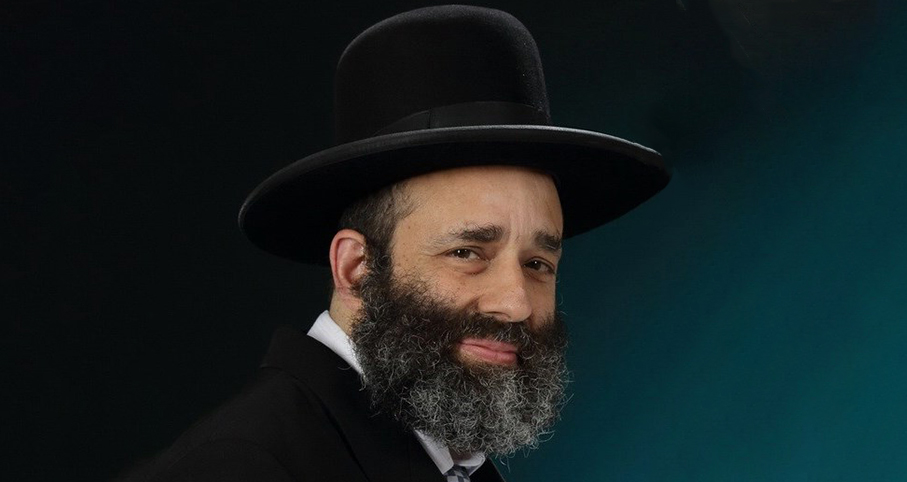- Library-Sifria
- Pesach
492
As we learned (above 3:4), one fulfills the mitzva of bi’ur ĥametz (disposing of ĥametz) in two ways, in action and in thought. The process of bi’ur ĥametz involves four stages. The first two, bedika and the first bitul, are performed on the evening of the fourteenth of Nisan. The second two stages, bi’ur and the second bitul, take place the following morning. Having discussed the laws relating to bedikat ĥametz in the previous chapter, we shall now address bitul ĥametz.
After bedikat ĥametz, we immediately rid ourselves of the ĥametz by nullifying it mentally. To make this process easier, a formal declaration of nullification – bitul ĥametz – was composed. This declaration is in Aramaic, because, at the time of its formulation, most Jews understood only Aramaic. It reads (according to the Ashkenazic rite):
כל חמירא וחמיעא דאיכא ברשותי, דלא חזיתיה ודלא בערתיה, לבטיל ולהוי הפקר כעפרא דארעא.
Kol ĥamira ve-ĥami’a de-ika bi-rshuti, de-lo ĥazitei u-delo bi’artei, li-vtil u-lehavi hefker ke-afra de-ar’a.
This declaration can also be said in Hebrew:
כל חמץ ושאור שיש ברשותי, שלא ראיתיו ושלא ביערתיו, יבטל ויהא הפקר כעפר הארץ.
Kol ĥametz u-se’or she-yesh bi-rshuti, she-lo re’itiv ve-shelo bi’artiv, yivatel ve-yehei hefker ke-afar ha-aretz.
In English:
All ĥametz and leaven in my possession that I have not seen and have not eliminated shall be nullified and become ownerless, like the dust of the earth.
The Sephardic version mentions only ĥametz, which includes leaven, and only nullification, which includes renunciation of ownership (see Ĥazon Ovadia, p. 32).
Following the actual bi’ur ĥametz on the morning of the fourteenth (see below, part 3 of this chapter), we perform a second bitul ĥametz. This is because the evening bitul ĥametz applies only to ĥametz we did not find in our search, and of which we remain unaware. It cannot, however, apply to the ĥametz we still intend to eat, since such ĥametz is important to us. We likewise cannot nullify the ĥametz we found in our search, because we intend to dispose of this by burning. Moreover, applying our evening bitul ĥametz to the ĥametz we still plan to eat would reveal the insincerity of our bitul and render it ineffective.
Therefore, in the evening we nullify only the ĥametz we did not find in our search; we do not intend to include the ĥametz we set aside to be eaten or burned. The problem is that if we misplace or overlook some of this remaining ĥametz, we are liable to violate the law of bal yera’eh and bal yimatzei. To prevent this from happening, we nullify the ĥametz a second time. One must be careful to nullify the ĥametz by the end of the fifth seasonal hour of the day, for with the onset of the sixth seasonal hour it is forbidden to derive any benefit from ĥametz, and it can no longer be nullified (SA 434:2).
The wording of the morning nullification is slightly different from that of the evening. In the evening we nullify only the ĥametz that was not found during the search, while in the morning we nullify the ĥametz in its entirety. It reads:
כל חמירא וחמיעא דאיכא ברשותי, דחזיתיה ודלא חזיתיה, דבערתיה ודלא בערתיה, לבטיל ולהוי הפקר כעפרא דארעא.
Kol ĥamira ve-ĥami’a de-ika bi-rshuti, de-ĥazitei u-delo ĥazitei, de-bi’artei u-delo bi’artei, li-vtil u-lehavi hefker ke-afra de-ar’a.
This declaration can also be said in Hebrew:
כל חמץ ושאור שיש ברשותי, שראיתיו ושלא ראיתיו, שביערתיו ושלא ביערתיו, יבטל ויהא הפקר כעפר הארץ.
Kol ĥametz u-se’or she-yesh bi-rshuti, she-re’itiv ve-shelo re’itiv, she-bi’artiv ve-shelo bi’artiv, yivatel ve-yehei hefker ke-afar ha-aretz.
Or in English:
All ĥametz and leaven in my possession that I have seen and that I have not seen, that I have destroyed and that I have not destroyed, shall be nullified and become ownerless, like the dust of the earth.
2.The Significance of Bitul Ĥametz
As noted, the wording of our bitul ĥametz is in Aramaic because it was composed in an era when this was the vernacular. Yet one is free to recite it in Hebrew or any language he understands. If one utters the declaration in Aramaic without understanding its general significance as an act of bitul, thinking instead that it is an Erev Pesaĥ prayer, he has not nullified his ĥametz (MB 434:9).
The Rishonim explain the significance of the bitul (nullification) in two ways. Rashi and Ramban explain that man has the power to nullify ĥametz. This capacity is unique to the context of ĥametz, since according to the Torah ĥametz is entirely insignificant during Pesaĥ. It is forbidden to derive benefit from it, and consequently it is like the dust of the earth, lacking all importance. In one respect alone does ĥametz retain significance during Pesaĥ: if it remains in one’s house, he transgresses the law of bal yera’eh and bal yimatzei. However, if one nullifies his ĥametz before it becomes forbidden, he has fulfilled the intention of the Torah, and if such a person keeps ĥametz in his possession during Pesaĥ, he will not have violated bal yera’eh and bal yimatzei.
Tosafot explain that the bitul is effective because it renders the ĥametz ownerless (hefker), and the Sages teach that bal yera’eh and bal yimatzei apply only to ĥametz one owns, not to ownerless ĥametz.
Thus, according to the first explanation, the nullification focuses on the ĥametz itself, while according to the second explanation, the nullification is directed at the owner, who relinquishes his ownership over the ĥametz.
The Ashkenazic version of the declaration takes both explanations into account, and therefore mentions both nullification and renunciation of ownership. The Sephardic version mentions only nullification, which includes renunciation, for if something is nullified it consequently becomes ownerless.
3.Laws Regarding Bitul Ĥametz
Most Rishonim agree that, in principle, it is not necessary to recite the bitul ĥametz aloud. It is possible to nullify the ĥametz "in one’s heart," i.e., to mentally regard his ĥametz as null and consider it as the dust of the earth. Preferably, however, one should express the bitul verbally, because this makes it clear and explicit. Moreover, some Rishonim maintain that the bitul must indeed be pronounced aloud (see SAH 434:7). All poskim agree that it is not necessary to pronounce the bitul in the presence of others. Nonetheless, some people enhance the mitzva by reciting the bitul in the presence of their family, to remind them that there is such a mitzva. 1
The bitul must be sincere. One must agree in his mind that the ĥametz is null and void forever, and that he will not use it even after Pesaĥ. If one intends to use the ĥametz after Pesaĥ, the bitul is not effective, and he violates bal yera’eh and bal yimatzei. Likewise, even if one renounces ownership of his ĥametz and places it in a completely open domain, he must not intend to reclaim it after Pesaĥ, for if he does, his bitul is not wholehearted (MB 445:18). 2
As mentioned above (3:4), according to the Torah, one can dispose of his ĥametz by merely nullifying it, and even if one were to keep ĥametz of great value in his possession, he may nullify it and would not transgress bal yera’eh and bal yimatzei as long as he makes a firm mental commitment that the bitul is absolute and that he will never again derive benefit from the ĥametz.
However, the Sages ordained that we not rely upon the bitul alone. Rather, one must also physically remove the ĥametz from his possession. They did this because they feared that the bitul might not be performed wholeheartedly. However, if one forgets to eliminate his ĥametz, and when Erev Pesaĥ arrives he is far from his home, he may rely on the bitul alone – but as soon as he returns home he must destroy the ĥametz. Even if he returns after Pesaĥ, he must remove the ĥametz, for if he fails to remove it, he proves that his bitul was not wholehearted (SA 448:5; MB ad loc. 25).
In principle, it is possible to nullify ĥametz through a shali’aĥ. However, preferably the owner of the ĥametz should perform the bitul himself, because some authorities maintain that only the owner of the ĥametz has the power to nullify his ĥametz (SA 434:4; MB ad loc. 15).
^ 1.. Bedikat Ĥametz U-vi’uro (6:4) which cites Tur §436, Ramban, Ran, and Maharam Halawa that bitul in one’s mind is sufficient. SAH (434:7 and Kuntrus Aĥaron) explains that even though these authorities believe that nonverbal nullification suffices on a Torah level, they still maintain that on a rabbinic level preferably one should nullify the ĥametz verbally. According to Ritva and Beit Yosef, based on the Yerushalmi, one must verbalize the bitul. However, SA 437:2 states: "He nullifies it in his heart and this is sufficient." BHL 437:2 states that there are two opinions in the matter, and Gra agreed that nullification in one’s mind is sufficient. Whatever one nullifies to himself is considered hefker, as per Tosafot’s explanation that the purpose of the nullification of ĥametz is to deem it ownerless. Even though generally if one wants to declare his property ownerless he must do so in front of three others, as per rabbinic injunction, in this case the Sages deferred to the Torah standards of hefker and allowed one to make the declaration to himself.
^ 2.. See Bedikat Ĥametz U-vi’uro 6, n. 7, which cites Responsa R. Akiva Eger that if one verbalized the declaration to make his ĥametz ownerless, it becomes ownerless, even if he did not make the declaration wholeheartedly. Thus, anyone can claim his ĥametz, and the former owner is not able to claim that he did not mean what he said. Perhaps, according to MB in the name of SAH, although legally another individual can acquire the ĥametz, if the original owner did not nullify his ĥametz wholeheartedly, the ĥametz remains in his possession until someone else actually claims it (as opposed to becoming ownerless right away).
One Who Demeans the Holy Days
Chapter One-Part Three
Rabbi Eliezer Melamed
The Mitzva to Eat Matza
Chapter Sixteen-Part Seven
Rabbi Eliezer Melamed | 5775
Magid – Beginning the Hagada
Chapter Sixteen-Part Six
Rabbi Eliezer Melamed | 5775
Matza Ashira and Matza Sheruya
Chapter Eight-Part One
Rabbi Eliezer Melamed | 5775

That a Cohen May Not Marry a Divorcee
Rabbi Shmuel Holshtein | 5769

Milk Spoon in a Meat Sink or Dishwasher
Kashrut in a Nutshell
Rabbi David Sperling

Bnei Noach and Korbanos
Can a Gentile bring a sacrifice to Hashem
Rabbi Yirmiyohu Kaganoff








